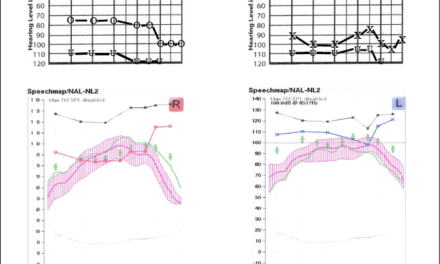Final Word | February 2018 Hearing Review
I took the opportunity to visit the global technology event, the Consumer Electronics Show (CES), in early January of this year. I had attended a few years ago and was impressed with the sheer number of exhibits, and was similarly affected this year. There were in excess of 4,000 exhibiting companies and more than 170,000 attendees, with representation from more than 150 countries. A problem with having so much to see is that it is easy to get overwhelmed and distracted by so many “shiny objects.” The major themes included robotics, connected and smart devices, cars, appliances, homes, and even toilets! Much of the focus was around artificial intelligence and voice activation of devices. Foreshadowing the future arrival of over-the-counter hearing aids were several headphone systems that incorporated self-test features and automatic “tuning” of the headphones, in an effort to compensate for any hearing loss.
As the last century drew to a close, there was concern about devices not knowing what to do when the date rolled over from the 1900s to the 2000s. Y2K became a huge concern that turned out to be overblown. There were costs to repair programming “bugs,” but no major failures when the 20th century became the 21st. That said, as technology expands in all directions, we should be thinking of the future and how things may change for hearing aids—and at the same time, recognize that some things will likely never change. Viewing the CES exhibits focused me on the future and made me wonder what we have to look forward to with hearing aids in the near future, say in 2020 (Y2.02K).
Artificial Intelligence: What may change? Machine learning may improve the performance of hearing devices with analyses based on the user’s unique acoustic environments and application of advanced algorithms. What will remain the same? The result will continue to be less improvement than we or the users would like.
Self-assessment of Hearing: What may change? We could see the emergence of a self-assessment function in over-the-counter devices. Self-testing routines exist today, and, undeniably, have some value. However, the transfer of data from self-assessment to an effectively programmed hearing aid is another matter. What will remain the same? There will continue to be potential hearing aid users who will need help in selecting, fitting, and adjusting hearing aids for satisfactory results.
Cerumen Occlusion of Devices: What may change? Probably not much, since cerumen happens. What will remain the same? There will continue to be hearing aid users who will not be able to properly clean their devices and who will experience interruption of service and will need help.
Batteries: Rechargeable batteries are an expectation simply because of familiarity with other common devices, such as mobile phones. Most hearing aid manufacturers offer some version of rechargeability today, and there will undoubtedly be more options in the next couple of years. What may not change? There will still be dead batteries, but for different reasons, such as forgetting to charge them.
Stigma: There is some encouraging data that suggest that the stigma of wearing hearing aids is not as bad as it was a decade or more ago.1 Familiarity with wearable technology has undoubtedly helped this trend. What may not change? Old stereotypes persist. Age and hearing loss have an association, and stigma about age persists. There will still be stigma, unfortunately.
Convenience: The devices on display at the CES show are often about convenience. Inconvenience is a factor in hearing aid adoption or rejection. If something is inconvenient, even if we receive benefit, we may be less likely to use it. What may change? We may see some evolutionary changes in the convenience of hearing aid use in the near future. Rechargeable batteries represent a convenience. What may not change? Hearing aids will still have some aspect of inconvenience.
The Final Word? In our world of hearing aids, change is evolutionary, slowly moving to smaller, better, and more effective products. I expect to see some beneficial changes by Y2.02K, but we will still be expecting and asking for more and better products. Why shouldn’t we?
Reference
Rauterkus EP, Palmer CV. The hearing aid effect in 2013. J Am Acad Audiol. 2014;25(9)[October]:893-903.
Citation for this article: Van Vliet D. Notes from CES 2018: What lies ahead? Hearing Review. 2018;25(2):50.





